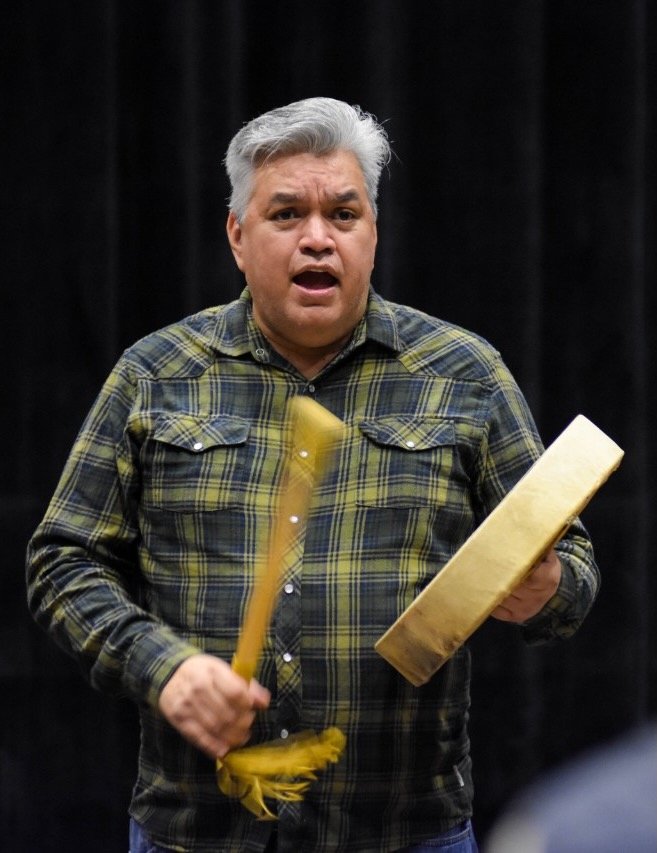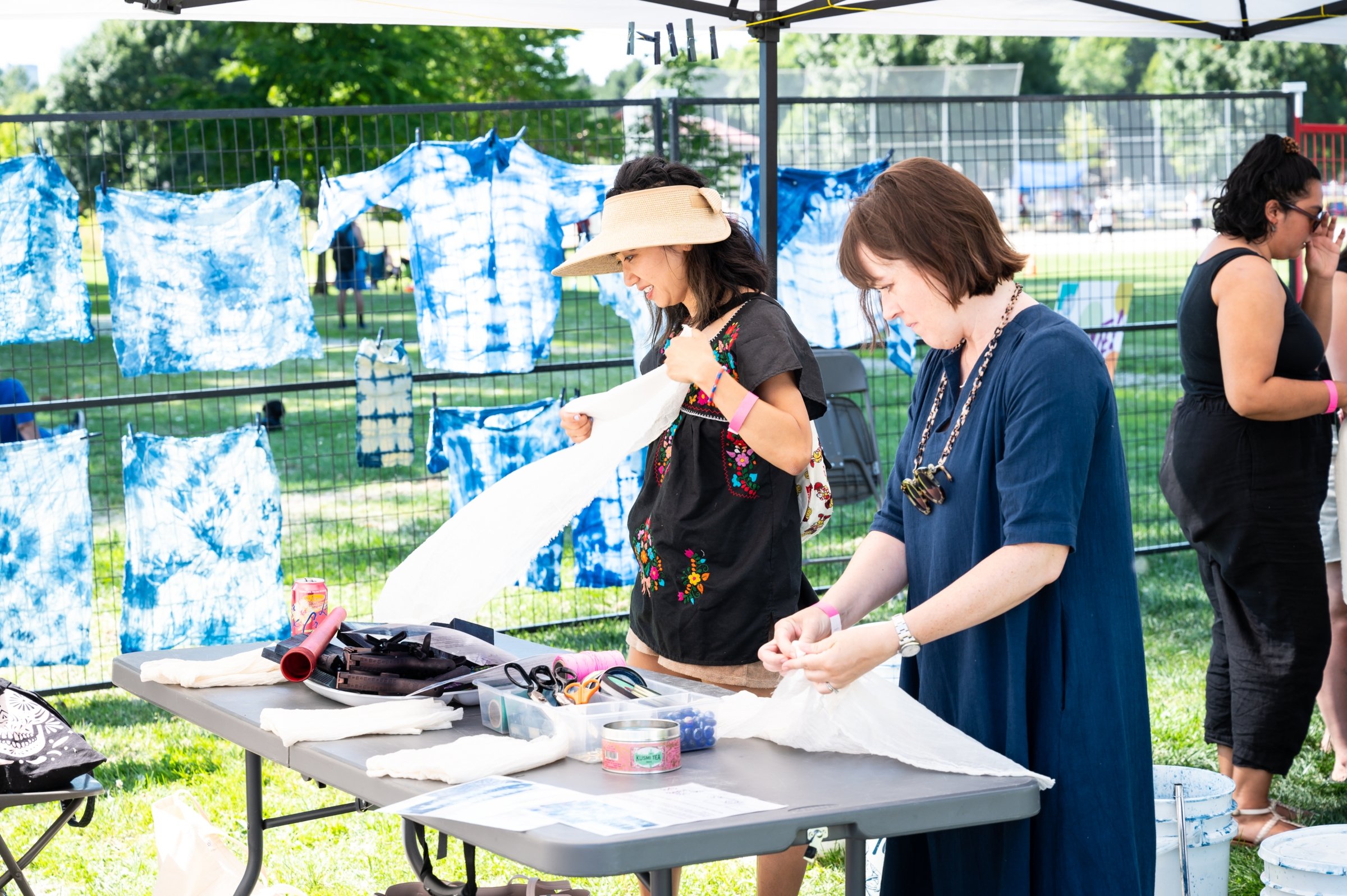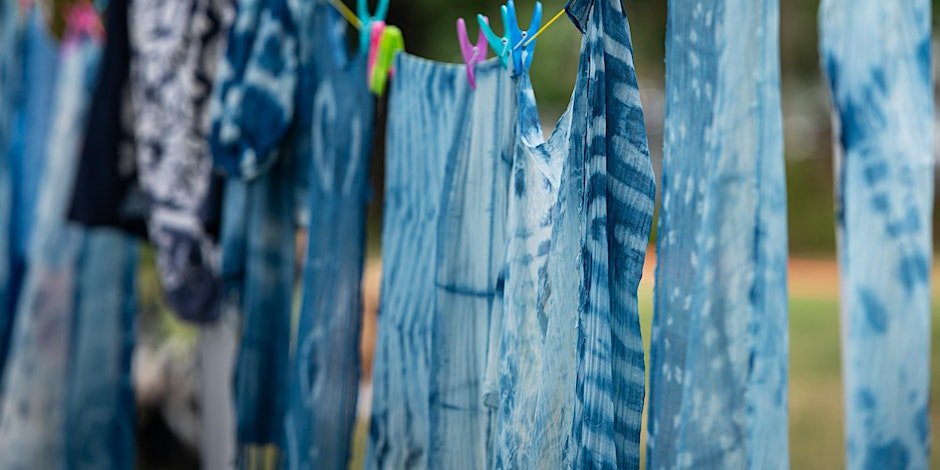Salish-singing and indigo-dyeing workshops join the wide array at Create! Art Festival
Composer-singer Russell Wallace and artist-designer Naomi Yamamoto are just some of the artists on hand for the event at Strathcona Park and East Side studios July 22 and 23
Russell Wallace holds a Salish singing workshop.
Naomi Yamamoto has been holding workshops at Create! since its founding three years ago.
Create! Arts Festival takes place July 22 in Strathcona Park and July 23 by registration in East Side art studios
IT’S ONLY NATURAL to hear composer and Lil'wat musician Russell Wallace’s resonant singing voice or see artist Naomi Yamamoto’s stunning indigo-dye textiles and think: “That's beautiful. I could never do that.”
But those artists, and many more from East Van, are hitting the third annual Create! Arts Festival to remind you—in the most hands-on way possible—that you can do those things.
On Saturday outside at Strathcona park and on Sunday inside local East Side art studios, Create! visitors of all ages will learn how to dye indigo linens and sing Salish songs, plus try watercolour painting, needle felting, pottery, glass fusing, photography, ukulele, and more. It’s all organized by the Eastside Arts Society, the folks that bring you the Eastside Art Crawl each November in the surrounding streets.
Create! Arts Festival isn’t just a chance to rediscover the joy of making art; it’s an opportunity to connect with some of the neighbourhood’s accomplished artists.
In Wallace’s case, the respected musician and composer has worked as everything from Indigenous Artist in Residence at the Vancouver International Jazz Festival to composing the soundtrack for the recent film Monkey Beach, and he’s just released a bunch of new wave-tinged songs on Bandcamp for CNDN, from a musical he’s working on that centres on a fictional Indigenous radio station in Vancouver in the 1980s. He’ll be running a Salish Singing Workshop at the park on July 22.
Teaching his people’s music and language has been a lifelong mission.
“I never anticipated myself teaching; it was really my mom who forced me into it,” the musician says with a laugh. “She said, ‘Please keep sharing the music.’ It’s become a responsibility in a way. You see, she’s a residential school survivor and she held onto those songs. She always said the church tried to take her songs and voice away, and the government tried to take her song and voice away. And she said they weren't able to do that. So for me, teaching that to people keeps her songs alive. She said, ‘If we don’t share it it’s going to be put in a museum and die.’”
The multiple-Juno nominee stresses his primary goal holding Salish singing workshop will be just “getting people singing”.
“A big part of it is just finding your voice,” he says, adding, “People are interested in Indigenous music for sure, and singing in Western society is not really celebrated or encouraged. You can’t just stand up on a bus and sing! Like my mom said, ‘Everyone who can speak can sing.’
“So pulling out that singing voice is the first step. Then comes talking about the history and context of the music.”
Some of the songs will require visitors to pick up a bit of the St'át'imc language. “I always point out there’s so many consonants that we don’t have in English,” he says. “There are a lot of glottal stops–that’ s a big part of our language, and they also make their way into singing. It’s funny how you sing it all your life and then you have to teach it and you realize. ‘Oh! There’s a glottal stop!’” (As Create! visitors will discover at Wallace’s workshop, that refers to the consonant produced by obstructing airflow in the vocal tract—the one you may have seen marked by the symbol that looks like a question mark without the bottom dot.)
Bringing along some hand drums, Wallace assures the songs will be simple enough for any park-goers to join in; you can register for one of the several time slots over the course of the day here.
Accessibility is something indigo-dyeing instructor Yamamoto, who will be hosting an Indigo Magic workshop in the park Saturday and in her space in Parker Street Studios on Sunday, also stresses.
“It’s very easy—it’s like a little more advanced tie-dye!” insists the leather and textile artist behind the Flightpath Design line. “There are different techniques you can use, and I’ll bring wood blocks and strings, or you can do a very basic dye.”
Indigo dyeing is an ancient, all-natural process.
This is Yamamoto’s third year at the festival that grew out of the wake of the pandemic.
“I think it’s great. Every year I’ve done my indigo workshop it’s sold out. And that tells me there is demand. During the pandemic, there was a surge in people tapping into that creative side, so timing-wise it’s been perfect. Also, I like the aspect of community building–gathering people together that wouldn't normally be together. And I can see people who feed off each other's ideas.”
Textile and leather artist Yamamoto may be best known for her cool line Flightpath Designs. Her interest in indigo dyeing dates back to experiments while studying at Alberta College of Art and Design.
She’s circled back to the art form not just because of its growing popularity, but because of its natural quality. “It’s also very old–they think it traces back to Egypt,” she adds. “For me it’s also part of my cultural background. In Japan it was used in more utilitarian ways; it would repel insects so materials would have more longevity.
“And then, when you’re using it it has a transformative quality. When you put the fabric in the dye it has a blue sheen. Then when you take it out it changes from green to blue over ten minutes. So it does have a magical quality as well.”
At the workshop both days, Yamamoto will provide small fabric pieces but invites festgoers to bring smaller items to dye, like t-shirts, baby onesies, napkins, and more; natural fibres like cotton, linen, or silk only, please. (You can register for the outdoor workshop here and the studio one here; the array of other pre-register workshops are here, though there will be a spectrum of drop-in opportunities on July 22 in the park, too.)
And if you’re worried about walking home with blue hands, Yamamoto will have gloves. But not everyone chooses to wear them, she says. As Create! shows each summer, you shouldn’t be afraid to get your hands dirty to free your inner artist.
On July 22, general admission includes CREATE! Art Zone, which will feature public participation art, art demos, a Festival Art Shop, food trucks, beer and wine, and more.















